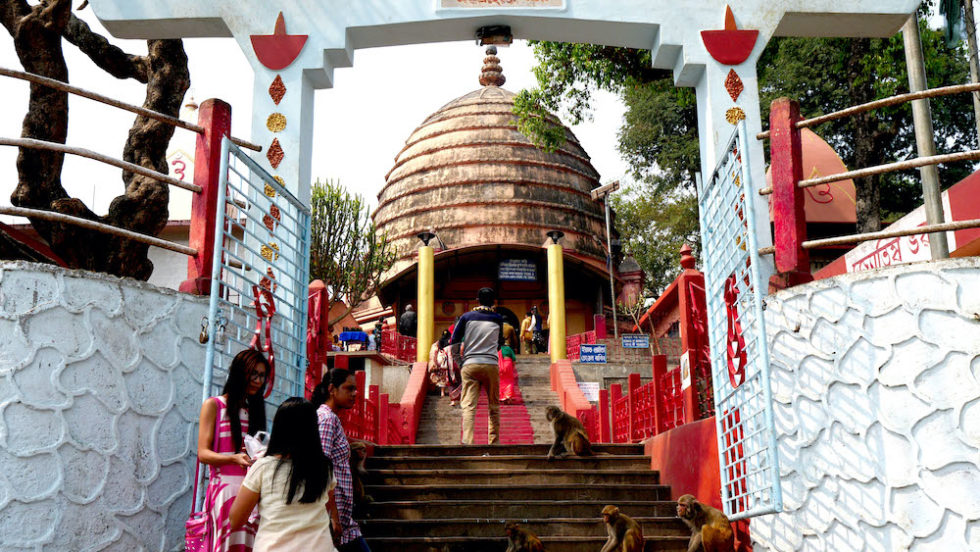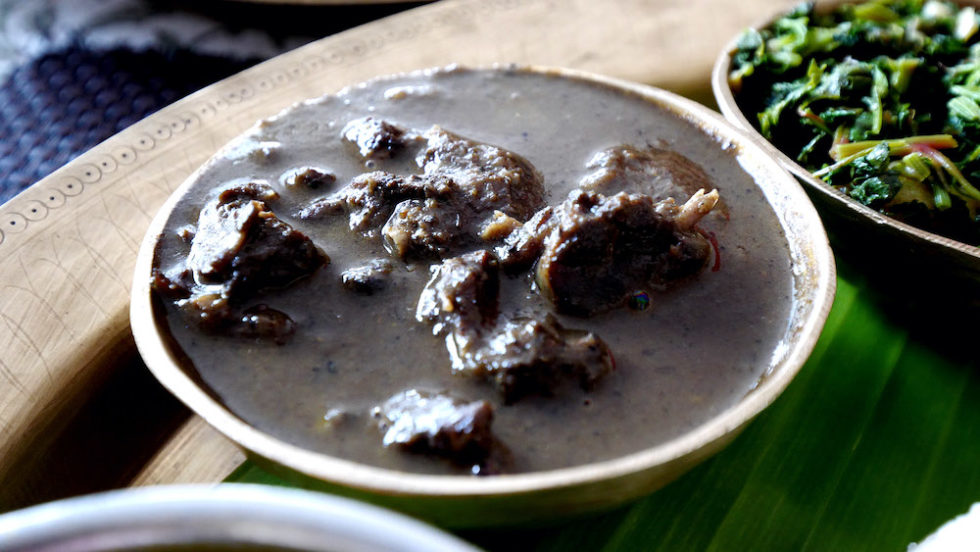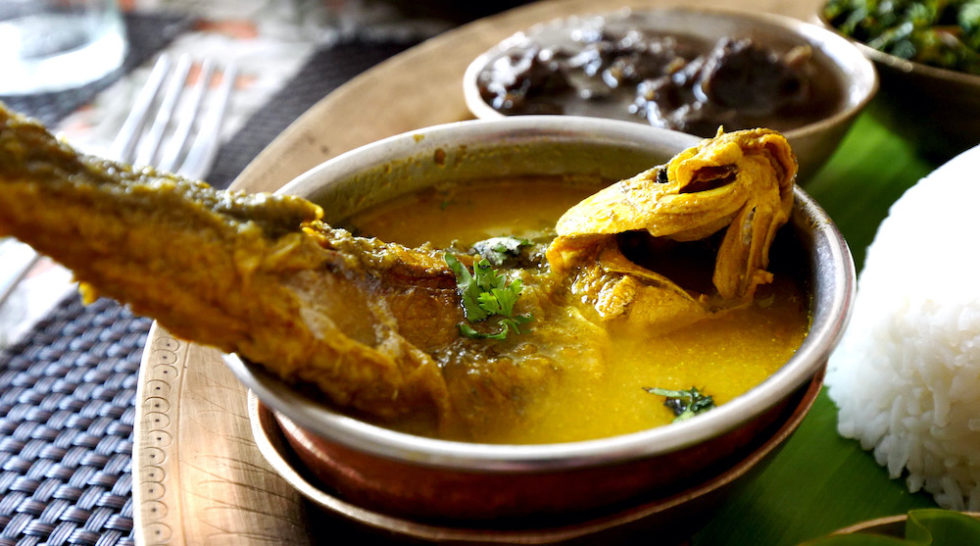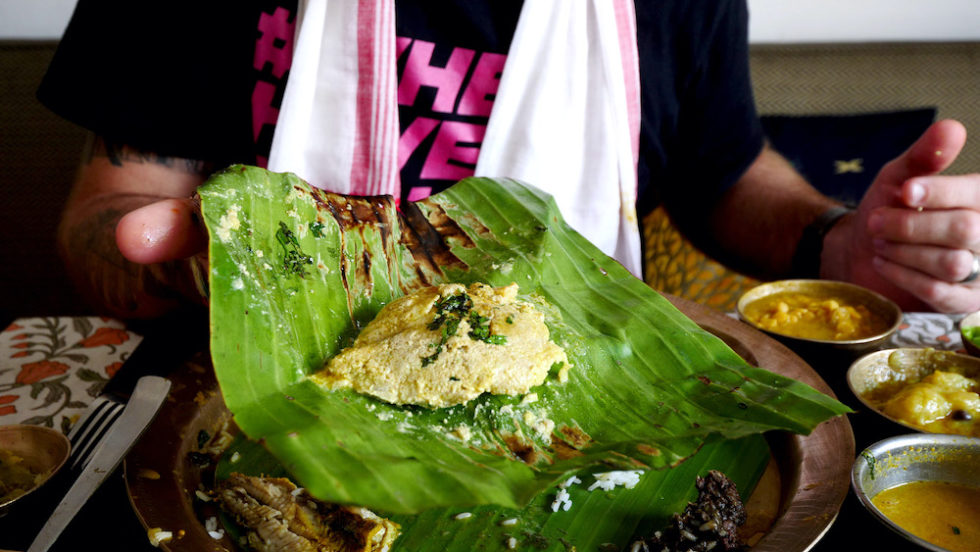My adventures in Guwahati continued on day two of my northeast India trip with a visit to another local temple. This one, Navagraha Temple, is also known as the Nine Planets Temple. There are lots of monkeys that hang around it. They’re not really a fan of cameras! Come along with me as I continue exploring this amazing city and try a traditional Assamese thali!
Nine Planets Temple was built by the Ahoms in the 18th century. This ancient temple was built to study the nine major celestial bodies in Hindu mythology. Today, people go there to make offerings to the planets and get blessings to sort out hardships in their lives.
The temple is beautiful and peaceful, but I advise being careful with your shoes when you visit temples. Sometimes shoes get stolen while their owners are worshipping inside, especially in the bigger and busier cities.

After leaving the temple, we visited a viewpoint where we looked out at Guwahati and the river. It’s really beautiful, but then we got attacked by one of the little monkeys! We decided to kill some time before our thali reservation by feeding them. They went crazy over them!
From there, we walked down the mountain and back into the town. We saw a beautiful neighborhood with really nice houses and idols. Then, after negotiating with our rickshaw driver (our ride eventually cost us 40 rupees/$0.57 U.S.), we arrived at Paradise Restaurant for lunch.
Lunch consisted of a traditional Assamese thali, which consisted of chicken, two types of fish, mutton, pigeon curry, dal, a mashed potato dish called pitika, a vegetable dish called khar, vegetable fry, rice, and more.

This thali, the Parampara Thaali, is smaller than other ones you can find around India, but it’s specific to the local cuisine.
We started with gooseberry soup with a type of thick, crispy flatbread or cracker. Like most soups and warm drinks here in India, the soup was served boiling hot. It’s really tangy and had a bit of lime in it. Then the thali arrived!
I went with the khar and dal first and mixed it with the rice. It was sweet from the papaya in it and was really delicious! Next, I tried the spinach and aloo pitika. It was amazing! There was some spice in it. I mixed it with the dal, which was also really tasty.

I continued my traditional Assamese thali with the pigeon, which was very bony, tasty, and had some nice fat on it. The sesame curry gave it an interesting flavor and it reminded me of goat! I accidentally swallowed a tiny bone though, so be careful when you eat this dish!
Then I mixed the sesame oil curry with the rice, got rid of the bones, and dug in. It needed some spice in my opinion, and I didn’t love the amount of bones, but other than that, the pigeon was good.
Next, I took some fish tenga and mixed it with the rice. Then I carefully pulled the fish apart to get rid of as many bones as possible before I dug in. The fish’s skin was fantastic! It was perfectly crispy and full of flavor.

Then I went for the head. A lot of people miss out on the head, but there’s a lot of meat there! If you’re really brave, eat the eyes as well. They’re like juicy, briny little gushers!
Then I tried a steamed fish with a mustard sauce inside a banana leaf. The fish was like butter! It practically fell apart in my mouth and was infused with the flavor of the banana leaf. Then I had some deep-fried eggplant with a mint-coriander chutney. I didn’t love the chutney, but I really liked the eggplant!
We ended with a dessert that we had to mix together ourselves. It contained puffed rice, cream, and jaggery. When mixed together, it creates a type of rice pudding. The puffed rice absorbs everything really well. It’s like a rice pudding on steroids!

I loved this thali! It reminded me of meals I had in southern India where I got to eat with my hands.
If you loved coming along on my temple visit and traditional Assamese thali lunch, please give it a thumbs up and leave me a comment! Also please subscribe to my YouTube channel so you don’t miss any of my upcoming content! I’ll see you in my next travel/food adventure around the world!
Counter
101 Countries • 1432 Cities